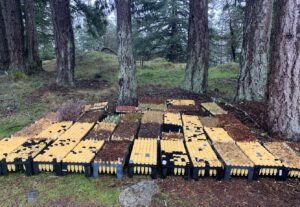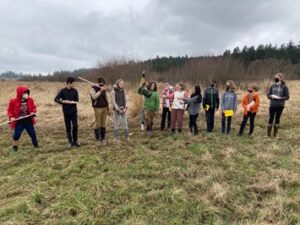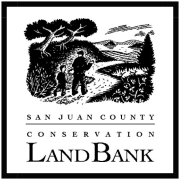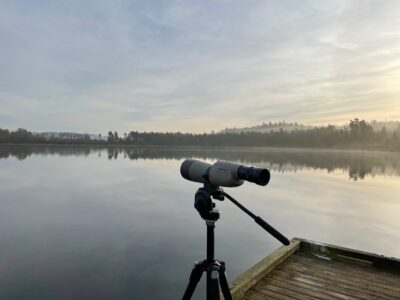 Buds are beginning to swell and Bombus queens are once again a thrum in the air. Staff relish these early signs of spring and are eager to see how all the roots and shoots of their recent plantings develop. Wildflower plugs, all of them nursery-grown, were relocated to our preserves on Turtleback Mountain, Upright Head and the Channel. Willow whips were set along a tributary stream at Zylstra Lake Preserve, and conifer seedlings, both spruce and hemlock, have been planted along Cascade Creek.
Buds are beginning to swell and Bombus queens are once again a thrum in the air. Staff relish these early signs of spring and are eager to see how all the roots and shoots of their recent plantings develop. Wildflower plugs, all of them nursery-grown, were relocated to our preserves on Turtleback Mountain, Upright Head and the Channel. Willow whips were set along a tributary stream at Zylstra Lake Preserve, and conifer seedlings, both spruce and hemlock, have been planted along Cascade Creek.
We refer to these types of restoration projects as habitat enhancement. Pollen, nectar, berries, and seeds contribute to food webs for wildlife. Leaves and branches provide critters with shade and cover, and structure for well-woven nests These county-wide efforts were supported by a suite of nature-loving volunteers, as well as the latest recruits of the Island Conversation Corps. Thank you!
Our conservation lands are beloved places for low-impact recreation too. Providing safe access to natural areas occurs all-year round, but each season brings a unique emphasis. Winter’s gales and floods topple trees and staff cleared oodles from trails and fence lines. Significant repairs were recently made to Turtleback Mountain’s south entrance, but the road washout didn’t impede the progress on the forest health demonstration project. Slick algae from the dock at Hummel Lake Preserve was scrubbed away, and an educational field trip to admire waterfowl took place. A group of  Spring Street International School students slogged out into Beaverton Marsh Preserve the largest freshwater marsh in the County.
Spring Street International School students slogged out into Beaverton Marsh Preserve the largest freshwater marsh in the County.
The season ahead will offer longer light to walk, and a greater abundance of blooms, bugs and birdsong. We’ve hatched numerous plans for educational outings too. Check out our calendar of events HERE. And don’t hesitate to reach out to us with what you’re interested in learning more about within the special areas protected by the Conservation Land Bank.


